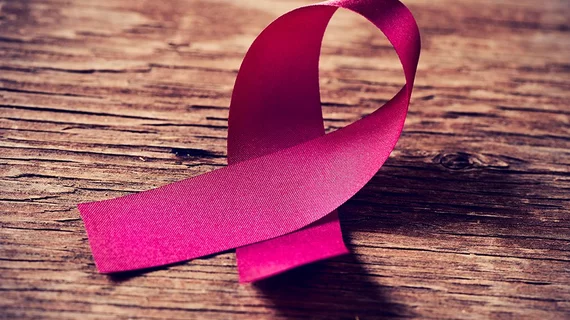Awareness of breast density and its relation to cancer has grown in the United States over the past five years. However, certain minority populations are still lagging behind their peers when it comes to this important clinical marker.
Those are some of the key takeaways from a new Mayo Clinic survey of almost 3,000 women, representative of the entire U.S. population. Comparing public sentiment to a previous survey conducted five years prior, Mayo researchers found that about 65.8% of women were aware of breast density’s importance in 2017, compared to 57.5% in the previous survey.
However, race, income and education “significantly” impacted this awareness negatively, signaling the need for better outreach to less-served patient segments, according to the study, published Tuesday, Nov. 19, in the Journal of the American College of Radiology.
“As in 2012, [breast density] awareness continues to be higher among white versus nonwhite Hispanic women, and women with higher income and educational attainment, suggesting the need for continued educational efforts focusing on populations vulnerable to disparities in health care access and outcomes,” wrote Deborah Rhodes, MD, an internal medicine specialist from the Breast Diagnostic Clinic at Mayo, and colleagues.
Women’s knowledge of the impact that breast density has on increasing cancer risk grew between the two surveys, researchers found. And it was also higher in states that have specific density legislation, which Rhodes et al. noted may be thanks to more consistent messaging to women.
Conversely, awareness of the impact that density has on “masking” mammography results did not increase during the five years between surveys, nor was it higher in states with legislation. About 25% of those eligible for screenings don’t know the impact denser tissue has on readings, “which is important given that the primary purpose of BD legislation is to inform women of mammography’s limitations in dense breasts,” the study noted.
Rhodes deemed masking as one of the “most actionable” aspects of the survey results, underlining the need to educate women about it and the possible need for supplemental screening. Only a little more than half of the 28 states with breast density legislation in effect for a year at the time of the survey required mentioning masking in follow-up letters, and how it may hide cancer or make it harder to detect. This also further underscores the need for federally mandated notification letters, they added.
Another key takeaway for radiologists and other providers is the need to talk with patients about breast density. Less than half of women who are aware of this issue have actually discussed it with their healthcare provider, which is not a measurable uptick from the 2012 survey.
“A clear process for initiating patient-provider discussions and educational tools to facilitate these discussions are critical needs, as is the development of consensus about which patients are most likely to benefit from supplemental screening and which supplemental screening tool offers the best balance of benefit and harms,” the authors wrote.

